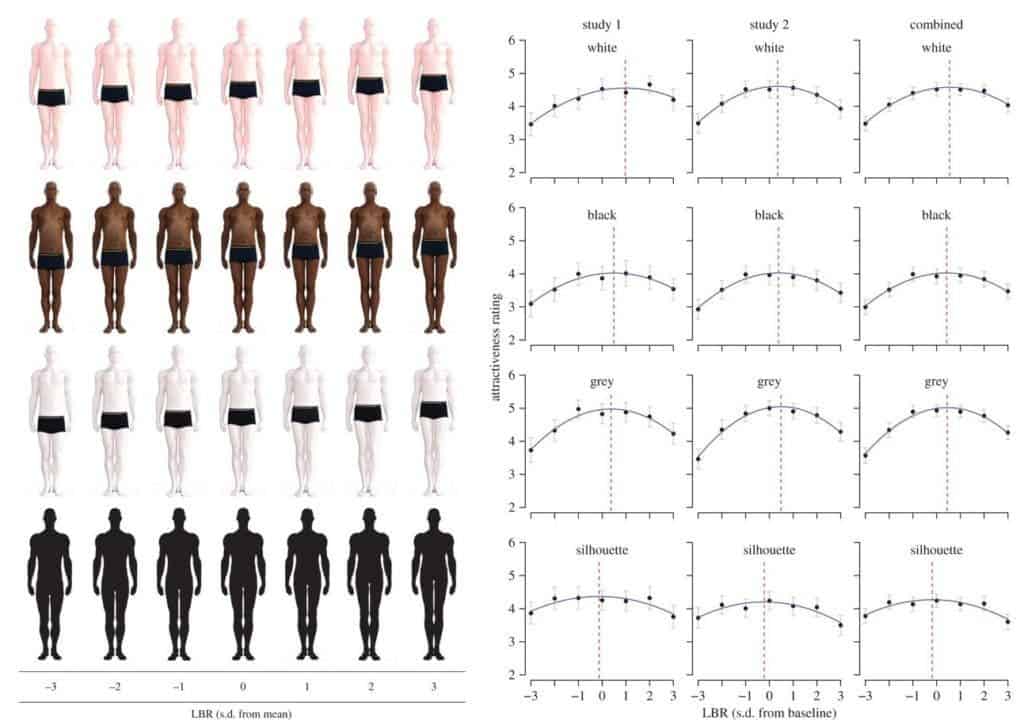It’s really not that much of a secret that women with longer legs are more attractive. A new study surprisingly found, however, that the same is also true for men — to an extent. According to British psychologists at the University of Cambridge, men with a slightly higher leg-to-body ratio were deemed more appealing, as rated by women, while those with the lowest leg-to-body ratio were the least attractive.

For the study, 74 heterosexual women aged 20 to 69 were shown 28 images of computer-generated male bodies. The participants were shown the images one at a time. Each image showed a male that was exactly the same height as all the others with the only variable being the leg-to-body ratio.
The researchers used three colors of the 3-D generated male bodies — white, grey, and black — and a silhouette control.

For each set, the image at the center marked with “0” represents the average leg-to-body ratio. Numbers on the side represent the standard deviation away from the average.
After the data was pooled in and analyzed, the researchers found that women generally prefer men with slightly longer legs. Specifically, the most attractive leg-to-body ratio was 0.5 standard deviations above the average. Anything higher or lower was rated as less attractive.
The results were consistent across different skin colors. However, in the case of silhouettes, women preferred men with slightly lower leg-to-body ratios than the average. The researchers mention that since silhouettes are not very realistic compared to the 3D-renderings, this maybe explains the inconsistencies in the two sets of results.
Researchers also caution that this may not be the final word. Previously, scientists found Japanese women prefer men with average leg-to-body ratios suggesting the preference may have a cultural component. There are, however, some who claim there are evolutionary reasons why people find longer legs attractive.
“Long legs are a sign of health,” said Boguslaw Pawlowski at the University of Wroclaw in Poland.
In the meantime, feel free to put on a pair of high heels and experiment. You’ll definitely get different results with the ladies than what you’re used to that’s for sure.
Scientific reference: Thomas M. M. Versluys, William J. Skylark. “The effect of leg-to-body ratio on male attractiveness depends on the ecological validity of the figures.” R. Soc. Open Sci. 4: 170399. Published: Sept 2017. doi: 10.1098/rsos.170399.



